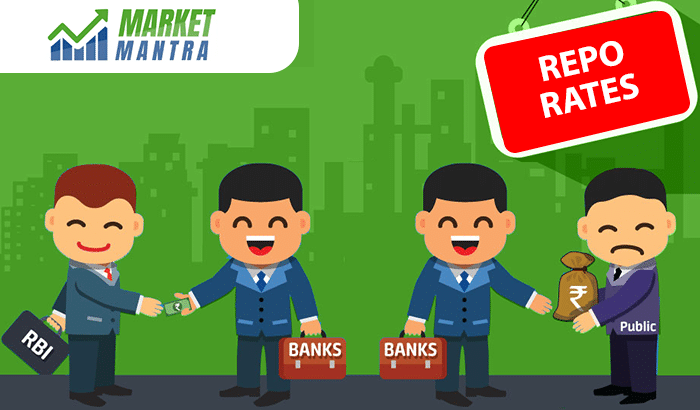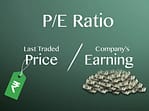What is Repo Rate?
Repo rate is the rate at which the central bank of a country (Reserve Bank of India in case of India) lends money to commercial banks in the event of any shortfall of funds. Repo rate is used by monetary authorities to control inflation.
At the time of inflation central banks increase repo rate as this acts as a disincentive for banks to borrow from the central bank. This reduces the money supply in economy helps in controlling inflation.
How does repo rate work?
When someone borrow money from the bank, this lending of money attracts some amount of tax on the principal amount. Similarly banks borrows money from Central Bank (i.e., RBI in India) during less cash inflow, on which they have to pay interest on it. This is termed as Repo Rate.
Components of Repo transaction?
The components of repo rate transaction between Central bank (RBI) and banks are as follows:
- Bank have to provide some security against the loan amount (RBI-recognized securities that are above the Statutory Liquidity Ratio limit).
- Central Bank (RBI) gives one day or overnight loan to bank.
- Central Bank (RBI) charges interest on it (i.e., Repo Rate) on it.
- Banks returns the loan amount after one day and repurchase the security they gave.
How Repo Rate effect Economy?
Repo rate are important and powerful arm of the Indian monetary policy that is responsible for regulation of country’s money supply, inflation levels, and liquidity (Cash Flow).
The levels of Repo Rate have direct link to the cost of borrowing to the banks. Higher the Repo Rate higher the will be the cost of borrowing for banks which effect direct to customer.
E.g. If A borrows money from XYZ Bank at that time if the repo rate is high interest to be paid by A is also high and if the repo rate is low the interest is also low.
When inflation rises:
During the inflation time, Central bank (RBI) makes some hard attempts to bring down flow of money in economy. For doing this Central bank have to increase the Repo Rate.
When RBI wants to flow Cash into system:
When Central Bank (RBI) needs to increase the flow of the cash into the economy it lowers the Repo Rate.
What is Reverse Repo Rate cut?
Reverse repo rate is the rate banks charge on funds they invest in government securities with the RBI. When the reverse repo rate rises, banks may raise home loan interest rates, because it becomes more profitable for commercial banks to invest in low-risk government securities instead of lending to people investing in property in India. When the reverse repo rate falls, home loan interest rates may fall.
How does reverse repo rate work?
Increase in reverse repo rate will definite decrease the supply of money into the market etc., other things remain constant. An increase in reverse repo rate means commercial banks will get more incentives to park their money with RBI, thereby decreasing money supply into the market.
It has an inverse relation with the money in the economy.
Components of Reverse Repo transaction?
Following are the components of the reverse repo transaction:
- Bank parks its excess cash with the RBI for one day.
- Such money will be considered as a one day loan by the bank to the RBI.
- RBI gives an interest rate called reverse repo rate to the bank
How Reverse Repo Rate effect Economy?
When there is a hike in reverse repo rate, banks can earn higher on their money which is deposited in RBI (Reserve Bank of India). This is the best way for safer investments for the banks so the overall flow of the money into market will decrease as more bank’s surplus funds are deposited with Reserve Bank of India (RBI) instead of being lent out.
This leads the banks to invest more money in more lucrative avenues such as money markets which increases the overall liquidity available in the economy. While this can also lead to lower interest rate on loans for the bank’s customers.
The decision will depend on multiple factors including the bank’s internal liquidity situation and the availability of other potentially less risky and equally lucrative investment opportunities.





